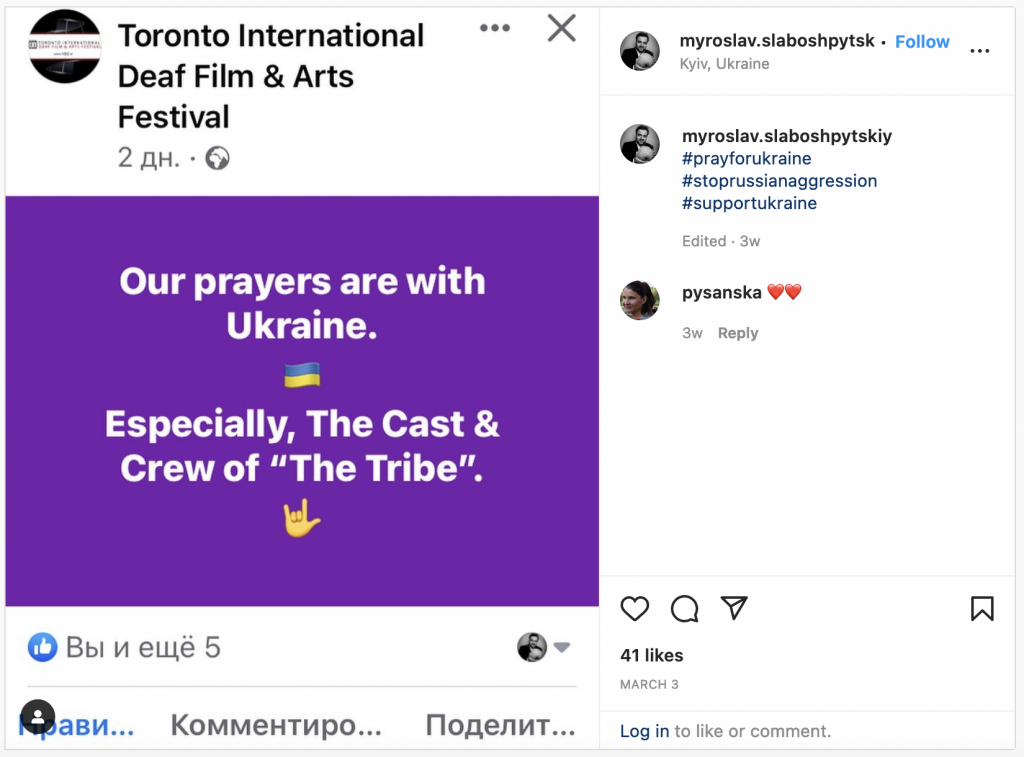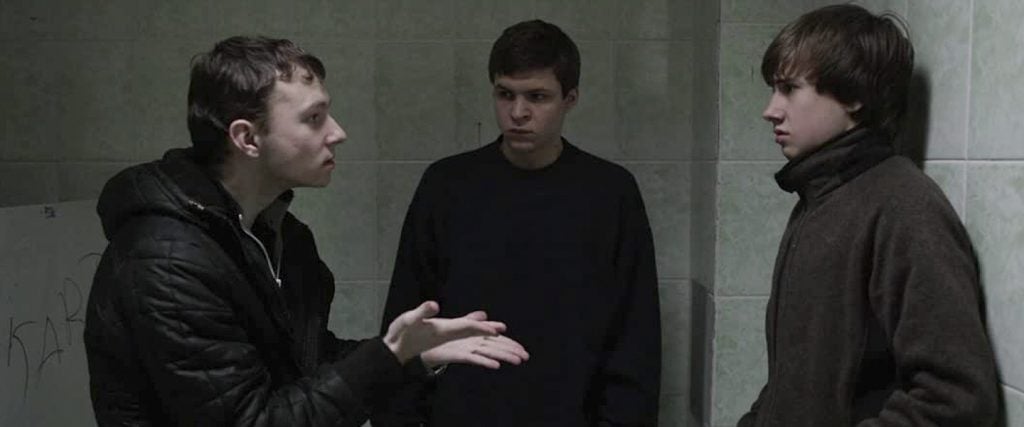On Sunday, odds are the Oscar for Best Picture will go to CODA, a hit at last year’s Sundance that was scooped up by Apple for a record $25 million. The film would also be historic for its Academy Awards win, becoming the first film featuring predominantly Deaf characters (played by Deaf actors) to accomplish that feat. Remarkably, though, CODA isn’t the only movie this awards season that addresses Deafness. Fellow Best Picture contender Drive My Car has a Deaf supporting character (although the actress who plays her, Park Yurim, isn’t Deaf), while the short-subject documentary Audible chronicles the Maryland School for the Deaf’s football team. Add in last year’s superb Sound of Metal, which took home two Oscars, and this has been one of Hollywood’s most fertile periods in terms of Deaf representation.
These movies all helped raise a curtain on a community that often doesn’t have stories made about it. And in each film, the creative team had to make a decision about how to dramatize Deafness, perhaps incorporating subtitles or shifting the sound design to give hearing audiences a sense of what it’s like to be Deaf. But one of the most radical films of recent years gave viewers an entirely Deaf world without offering any guardrails for those who can hear. The Tribe (available to stream and rent) is excellent for lots of reasons, but especially at a moment when the Oscars seem set to honor CODA, this 2014 film deserves a revisit — or to be put on your radar.
The Tribe was the feature debut of writer-director Myroslav Slaboshpytskiy, who had an unconventional idea. “I wanted to make a modern silent film,” he recalled in 2015. “When I was starting the work on The Tribe, I knew that it would be a universal story in sign language, easy to understand by any audience in all corners of the globe, without voice-over or subtitles. It was my principal challenge — to make a film in film language.”
This stark thriller is populated by Deaf, non-professional actors, starring Hryhoriy Fesenko as Sergei, a young man who’s the newest student at a Deaf boarding school. We quickly realize a few things. The first is that The Tribe isn’t Dead Poets Society, some staid feel-good drama about inspirational teachers and bright, impressionable students. No, Sergei isn’t in that kind of movie — he’s in a gangster picture, where he’s taken under the wing of older classmates who show him the ropes of their criminal enterprise. Prostitution is one of their big rackets, pimping out female students to local truck drivers. But Sergei isn’t alarmed by the violence and sex-work around him — turns out, like Henry Hill in Goodfellas, he kinda loves the lifestyle.
The Tribe’s other striking element is how its story is presented. The characters communicate through sign language, but there are no subtitles to translate their conversations. (Also, there’s no score, with only incidental noises on the soundtrack.) Instead, viewers have to interpret what’s happening through body language and facial expressions. This strategy would seem alienating, but it’s a testament to Slaboshpytskiy and his cast that it actually works brilliantly — if anything, The Tribe is even more riveting because you’re experiencing a movie in a way you never have before. The film’s dark twists and turns — including Sergei’s ill-advised relationship with one of the sex-workers — are amplified by the close attention you’re paying to the screen.
“Making a film with the Deaf using subtitles never even occurred to me,” Slaboshpytskiy, who is not Deaf, said in that same interview. “For me it would have been like having a man on stage who would be reading aloud the libretto of the ballet while it is performed.” In fact, the filmmaker made a point of insisting that any distributor who picked up The Tribe couldn’t add subtitles. And while the French film that CODA is based on, La Famille Bélier, was criticized for casting hearing actors for the Deaf roles, Slaboshpytskiy always knew Deaf men and women had to play these characters.
“The idea of teaching non-Deaf actors sign language was excluded at the very beginning,” he said. “The Deaf communicate in sign language with their whole bodies and each individual has his or her particular and unique manner of speaking, connected with their physical characteristics: mobility of features, temperament, degree of animation and physicality. Their style of communication influences the performance of a role more than the manner of a speaking actor so I was interested in personalities, naturalness and vibes.”
From Sound of Metal to CODA, this recent crop of films has been illuminating in showing how the Deaf grapple with the hearing world: Simply having characters sign to one another, their faces electric and bodies in motion, as if their whole being is expressing the thought, is a reminder how our words are often accented by the way in which we put them across. But this sensation is even more acute in The Tribe — the actors’ physicality is crucial in helping us understand what’s transpiring. A frown or a threatening glare — the occasional horrified reaction — tells us everything we need to know.
What’s interesting, though, is that while those more recent movies are, arguably, chiefly about Deafness, The Tribe doesn’t actually incorporate the condition into its narrative all that much. With two exceptions — two of the most shocking moments in the film, I’d add — Deafness doesn’t really play a part in what occurs. That might make The Tribe sound like an elaborate gimmick — or an attempt to exoticize a community in order to elevate a gritty crime drama into something more arty — but I think it allows these characters to escape being pigeonholed for their Deafness. Instead, in The Tribe they’re free to be judged by other things — namely, their criminal behavior and moral decay.

A sad other reason that The Tribe proves so timely is that Slaboshpytskiy is Ukrainian. In that 2015 interview, he said that the film’s boarding-school setting “can be perceived to be a metaphor of the state, even if that isn’t the intention. The Tribe is, to a certain extent, a metaphor of the arrangement of the Ukrainian state, at least the pre-revolutionary Ukraine. And the arrangement of the state of Ukraine was based on the principle of a Mafiosi group.”
Indeed, last month The Sunday Times saw parallels between the film and Ukraine’s current crisis, arguing, “It’s not hard to detect an allegory about Ukraine’s voicelessness on the world stage.” And Slaboshpytskiy’s desire to make “a universal story” is even more poignant when you consider that The Tribe is performed in Ukrainian sign language, which is separate from American sign language, just like speaking Ukrainian is different from speaking American. Even among the Deaf, there are barriers because of language, which Slaboshpytskiy tried to bridge through the purely visual storytelling he attempted in The Tribe, which won prizes at the Cannes Film Festival and elsewhere.
In late February, as the Russian invasion of Ukraine was underway, Slaboshpytskiy spoke with IndieWire from his home, where he’d been hiding in the basement with his wife and cat for safety. He was talking about hoping to make a follow-up to his acclaimed debut. “I want to make the same kind of powerful, interesting movies with emotions for a global audience,” he said. Soon after, though, a warning siren could be heard in the distance and he wrapped up the video call. “I suppose people may want to see something from Ukraine after this situation,” Slaboshpytskiy said.
There’s been a lot of talk in the build-up to the Oscars about how (or if) the ceremony should acknowledge the situation in Ukraine. That’s a larger, more complicated question, but in recent weeks I’ve been thinking about The Tribe, which unexpectedly finds itself suddenly very relevant in two ways — because of its country of origin and because of its Deaf characters. This movie’s greatness transcends this terrible moment. But, sadly, its exploration of the wickedness and cruelty that surrounds us will probably never not be timely.

